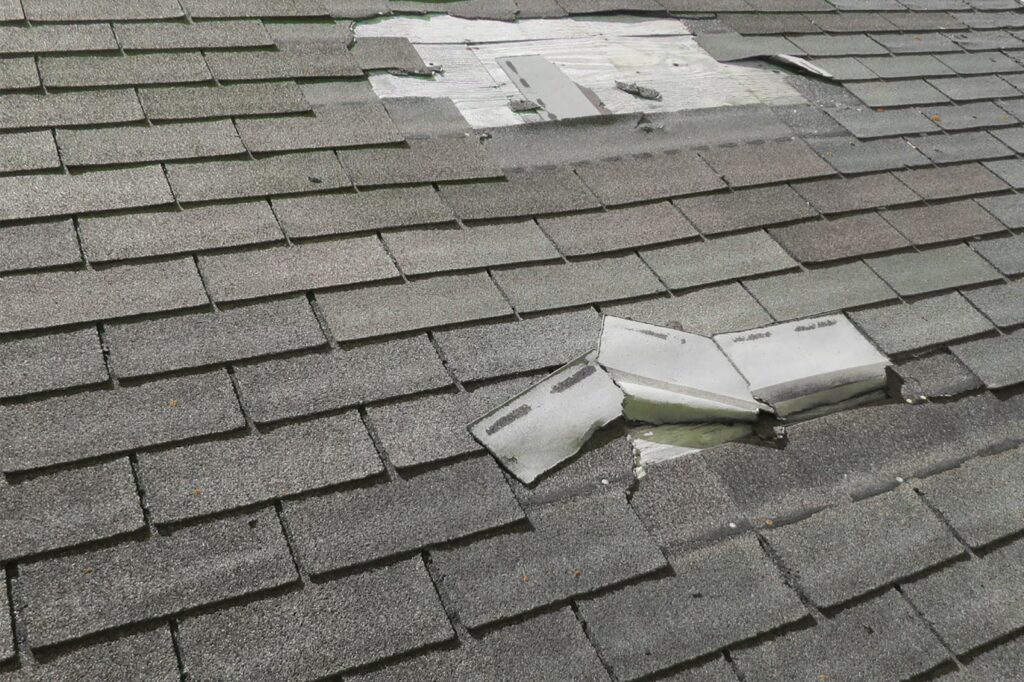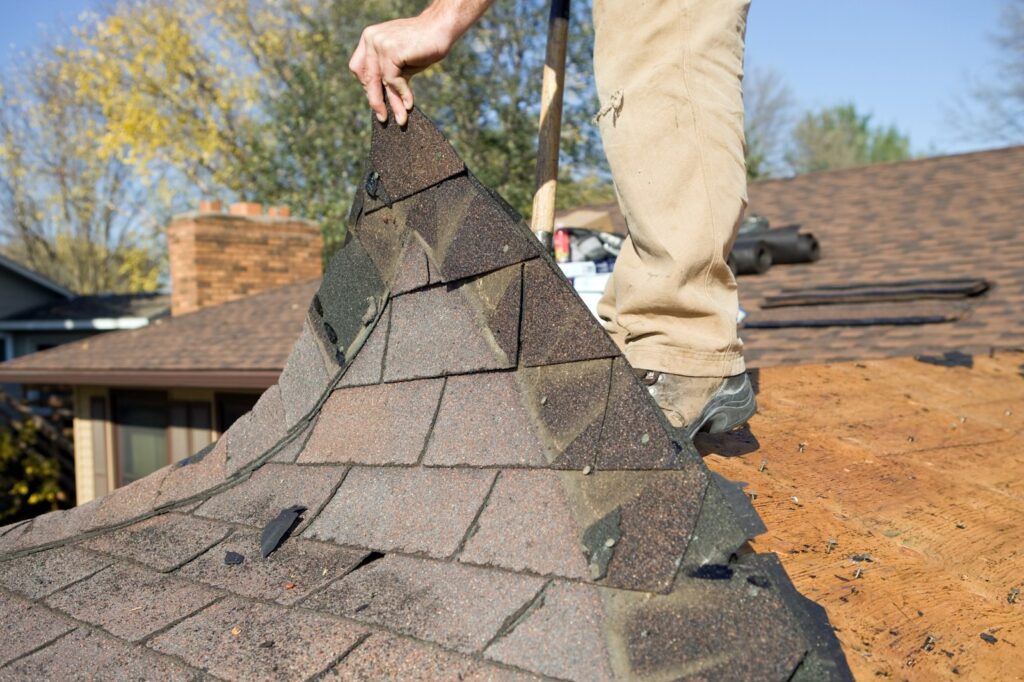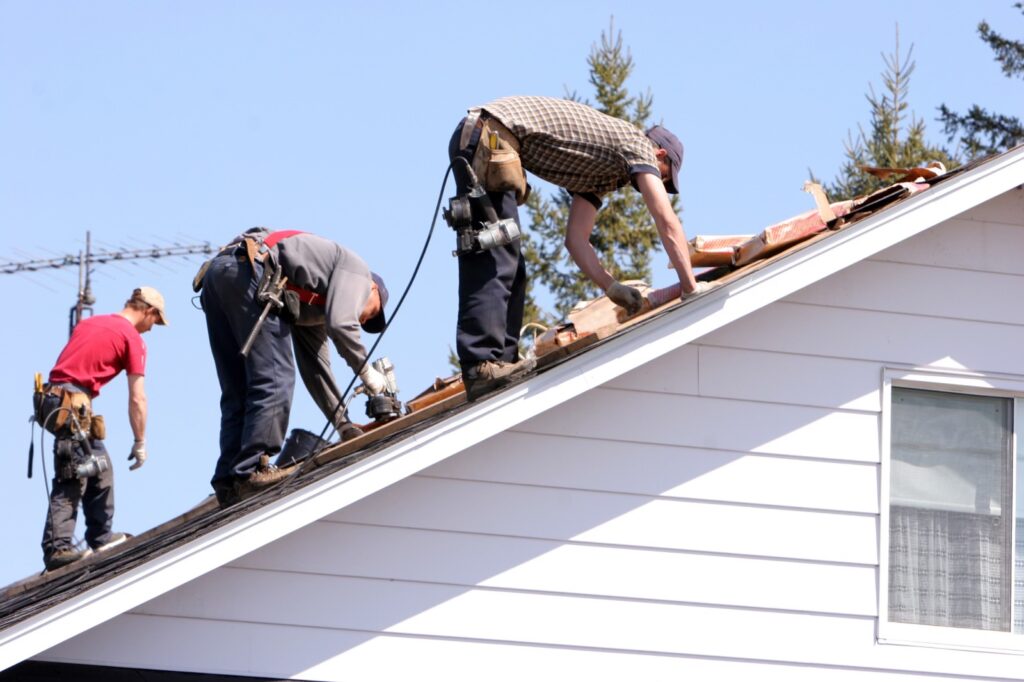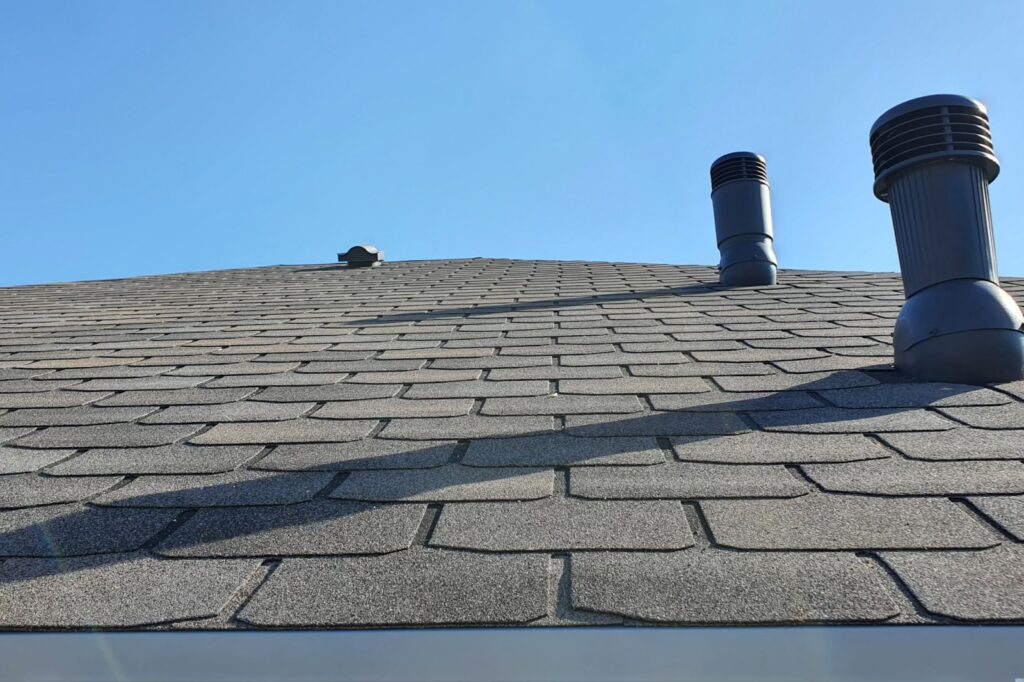
Your roof is your home's first line of defense against the elements, but it won't last forever. Knowing when to replace your roof shingles is crucial for maintaining your home's structural integrity and preventing costly water damage. Most homeowners struggle to identify the warning signs until it's too late, leading to emergency repairs and higher expenses.
In this comprehensive guide, we'll walk you through the telltale indicators that your roof shingles need replacement, from visible damage to age-related deterioration. You'll learn how to conduct basic inspections, understand the lifespan of different shingle types, and make informed decisions about repairs versus replacement. Whether you're a new homeowner or have lived under the same roof for decades, this information will help you protect your investment and avoid unexpected roofing emergencies.
Visual Signs Your Roof Shingles Need Replacement
The most immediate way to determine if your roof needs attention is through visual inspection. Certain signs are unmistakable indicators that your shingles have reached the end of their useful life.
Curling, Cupping and Clawing Shingles
When shingles begin to curl at the edges or corners, it's a clear sign of weathering and heat damage. This curling typically takes two forms: cupping, where the edges turn upward; and clawing, where the middle rises while the edges remain flat. Both conditions indicate that your shingles are no longer providing adequate protection.
Curling shingles are more susceptible to wind damage, can easily break off during storms, and create openings for water to penetrate your roof structure. Once you notice widespread curling across your roof, you're likely looking at replacement within 1-5 years, depending on the severity.
For a professional assessment of curling shingles, consider consulting with a roofing contractor in Arlington TX who can evaluate the extent of the damage and provide expert recommendations.
Missing or Balding Granules
Asphalt shingles are covered with granules that protect them from UV rays and enhance their fire resistance. Over time, these granules wear away naturally, but excessive granule loss is problematic.
Check your gutters and downspouts after heavy rain—if you find large amounts of granular material, your shingles are deteriorating. You might also notice "bald spots" or darker areas on your roof where granules have worn away. This balding exposes the asphalt to direct sunlight, accelerating deterioration and reducing your roof's lifespan.
Significant granule loss often indicates that a residential roof inspection in Fort Worth TX is warranted to determine the extent of the damage and whether replacement is necessary.
Cracked or Broken Shingles
Cracking typically results from wind damage or temperature fluctuations that cause shingles to expand and contract. While a few cracked shingles can be individually replaced, widespread cracking across your roof suggests systemic failure.
Broken or missing shingles create vulnerable areas where water can penetrate your roof's underlayment. These gaps compromise your roof's water-shedding capability and can lead to leaks, rot, and interior water damage. If you notice multiple areas with cracked or missing shingles, it's time to consider a full replacement.
After severe weather events, it's wise to schedule an emergency roofing service in Fort Worth TX to assess potential damage before it leads to more serious problems.
Moss and Algae Growth
While moss might give your home a charming, cottage-like appearance, it's actually damaging your roof. Moss retains moisture against the roof surface, which can freeze in winter months, causing shingles to lift and creating space for water infiltration.
Algae, often appearing as dark streaks, is less structurally damaging but indicates persistent moisture—a condition that accelerates shingle deterioration. In humid climates, algae growth is common and may not necessarily indicate immediate replacement needs, but it should prompt closer inspection of your roof's overall condition.
For homes in humid areas like Texas, regular maintenance from a roofing contractor in Bedford TX can help manage moss and algae issues before they lead to serious damage.
Age-Related Indicators for Roof Replacement

Even without visible damage, age is a reliable predictor of when roof replacement becomes necessary. Understanding the expected lifespan of your specific shingle type helps you plan for replacement before problems arise.
Expected Lifespan by Shingle Type
Different roofing materials have varying lifespans:
- Asphalt shingles, the most common residential roofing material, typically last 15-30 years depending on quality.
- Standard three-tab shingles usually last 15-20 years
- Architectural or dimensional shingles can last 25-30 years with proper maintenance.
- Wood shingles or shakes generally last 20-25 years but require more maintenance than asphalt.
- Metal roofing is more durable, with a lifespan of 40-70 years depending on the specific metal and installation quality.
- Premium materials like slate can last over 100 years, and tile roofs typically last 50+ years.
If your roof is approaching the end of its expected lifespan, it's wise to begin planning for replacement, even if you haven't noticed obvious signs of failure. Consulting with a roofing contractor in Keller TX can help you determine the most appropriate timing based on your roof's current condition and age.
Warranty Considerations
Your roof's warranty can provide guidance on expected longevity. Manufacturer warranties typically range from 20-50 years for asphalt shingles, with premium products offering longer coverage. However, these warranties often only cover manufacturing defects, not normal wear and tear or improper installation.
If your roof is still under warranty but showing signs of premature failure, you may be entitled to partial coverage for replacement. Review your warranty documentation and contact the manufacturer if you suspect defective materials.
Remember that most warranties are prorated after a certain period, meaning the coverage decreases as your roof ages. Additionally, transferring warranties when purchasing a home often requires documentation of regular maintenance, so keep records of all roofing work.
Seasonal Inspection Guide for Homeowners
Regular inspections are crucial for catching roofing problems early. Establishing a seasonal inspection routine helps you monitor your roof's condition systematically.
Spring and Fall Inspection Checklist
Conduct thorough roof inspections at least twice yearly, ideally in spring and fall. In spring, look for damage from winter storms and freezing conditions. Check for cracked, loose, or missing shingles, and ensure that winter moisture hasn't caused rot in the underlying structure.
Fall inspections should focus on preparing your roof for winter weather. Clear debris from valleys and gutters, trim overhanging branches, and check for any damage from summer storms. Pay special attention to areas around chimneys, vents, and other roof penetrations, as these are common leak points.
The most expensive roof repair is the one you could have prevented with regular inspection and maintenance. A small investment of time twice a year can save thousands in emergency repairs.
For homeowners who aren't comfortable with heights or lack the necessary expertise, professional residential roof inspection in Fort Worth TX services provide comprehensive evaluations and peace of mind.
Post-Storm Assessment
After severe weather events—particularly hailstorms, high winds, or heavy snow—conduct additional inspections regardless of your regular schedule. Storm damage isn't always immediately obvious from ground level but can compromise your roof's integrity.
Look for missing shingles, dents from hail impact, or debris damage. Check your attic for signs of leaks or daylight showing through the roof boards. If you suspect storm damage, document it with photos for insurance purposes and contact a professional for a thorough assessment.
Many roofing contractors in Dallas TX offer free storm damage inspections and can help navigate insurance claims if replacement is necessary.
DIY vs. Professional Roof Assessment
While homeowners can identify many roofing issues, there are limitations to DIY inspections. Understanding when to call a professional is essential for accurate evaluation.
Tools for DIY Roof Inspection
For basic DIY inspections, you'll need:
- Binoculars for viewing your roof from the ground
- A sturdy ladder with stabilizers for closer inspection
- A flashlight for examining the attic interior
- A simple moisture meter to check for hidden water damage
- A smartphone or camera to document findings
When inspecting from a ladder, focus on shingle edges, flashing around roof penetrations, and signs of sagging. Inside your attic, look for water stains, mold, or daylight showing through the roof.
Safety should always be your priority—if you're uncomfortable with heights or your roof has a steep pitch, stick to ground-level inspections with binoculars and leave the closer examination to professionals.
When to Call a Professional
Certain situations warrant professional assessment:
- After severe storms with potential for hidden damage
- When you notice interior leaks or water stains
- If your roof is more than 15 years old and showing signs of wear
- When selling your home and a roof inspection is required
- If you're considering filing an insurance claim for roof damage
Professional inspectors have the training to spot subtle issues that homeowners might miss. They can safely access all areas of your roof and provide documented evidence of its condition. For comprehensive evaluations, consider scheduling a commercial roof inspection in Fort Worth TX for business properties or a residential inspection for your home.
Cost Analysis: Repair vs. Full Replacement

One of the most challenging decisions homeowners face is whether to repair problem areas or invest in complete roof replacement. This decision involves both immediate costs and long-term value considerations.
Partial Replacement Considerations
Partial replacement or spot repairs may be appropriate when:
- Damage is confined to a specific area
- Your roof is relatively new (less than 10 years old)
- The damaged shingles match available replacements
- The underlying structure remains sound
However, partial replacement has limitations. New shingles often don't match the color of weathered ones, creating a patchwork appearance. Additionally, mixing new and old materials can create uneven surfaces that affect water drainage and accelerate wear on the newer shingles.
If you're considering partial replacement, consult with a roofing contractor in Euless TX to determine if this approach is viable for your specific situation.
Long-term Value of Complete Replacement
While full replacement requires a larger upfront investment, it often provides better long-term value when:
- Your roof is approaching the end of its expected lifespan
- Damage affects multiple areas
- The underlying structure shows signs of deterioration
- You plan to stay in your home for many years
Complete replacement ensures uniform protection, often comes with new warranties, and can incorporate modern materials with improved energy efficiency and durability. Additionally, a new roof typically returns 60-70% of its cost in increased home value, making it a worthwhile investment before selling.
For commercial properties, commercial roof replacement in Fort Worth TX services can minimize business disruption while providing long-lasting protection.
Modern Roofing Alternatives to Consider
When replacing your roof, you have an opportunity to upgrade to newer materials that offer improved performance and longevity.
Sustainable and Long-lasting Options
Today's roofing market offers innovative alternatives to traditional asphalt shingles:
- Metal roofing has gained popularity for its 40-70 year lifespan, energy efficiency, and recyclability. While the initial cost is higher than asphalt, metal roofs require minimal maintenance and can reduce cooling costs by up to 25%.
- Composite shingles made from recycled materials mimic the appearance of slate or wood while offering superior durability and fire resistance. These environmentally friendly options typically last 30-50 years.
- Solar shingles integrate photovoltaic cells directly into roofing materials, generating electricity while protecting your home. Though expensive initially, they provide energy savings throughout their 25-30 year lifespan.
- Cool roofing materials with reflective properties reduce heat absorption, lowering cooling costs in hot climates like Texas. These energy-efficient options can qualify for rebates or tax incentives in some areas.
For guidance on selecting the best material for your specific needs, consult with a roofing contractor in Grapevine TX who can explain the pros and cons of each option.
Regional Considerations for Roof Replacement

Your geographic location significantly impacts roofing decisions, from material selection to timing of replacement.
Climate Impact on Shingle Lifespan
In hot, sunny regions like Texas, asphalt shingles typically deteriorate faster due to UV exposure and extreme temperature fluctuations. Roofs in these areas may need replacement every 15-20 years, even with proper maintenance.
Coastal areas face additional challenges from salt exposure and high humidity, which can accelerate corrosion and promote algae growth. Wind resistance becomes particularly important in hurricane-prone regions.
Areas with heavy snowfall require roofing systems that can support substantial weight and prevent ice dams. Proper ventilation and insulation are especially critical in these climates.
For region-specific advice, work with local experts like Veteran Brothers Roofing & Restoration who understand the unique challenges of your climate and can recommend appropriate materials and installation techniques.
Take Action Today to Protect Your Home
Recognizing when to replace your roof shingles is about more than aesthetics—it's about protecting your entire home from water damage, structural issues, and decreased property value. By understanding the visual cues, age-related factors, and regional considerations we've discussed, you can make informed decisions about your roofing needs.
Don't wait until leaks appear inside your home to address roofing problems. Being proactive about roof maintenance and replacement saves money in the long run by preventing secondary damage to your home's structure, insulation, and interior finishes.
If you've identified several warning signs mentioned in this guide, contact Veteran Brothers Roofing & Restoration for a professional assessment. Their experienced team can provide an honest evaluation of your roof's condition and help you explore your options, whether that means targeted repairs or complete replacement.
Take the first step toward peace of mind by scheduling a comprehensive roof inspection today. Your home is too valuable to risk damage from a failing roof, and addressing problems early always costs less than emergency repairs.
Frequently Asked Questions
How often should roof shingles be replaced?
The replacement timeline varies by material. Standard asphalt shingles typically last 15-25 years, architectural shingles 25-30 years, wood shingles 20-25 years, and metal roofing 40-70 years. However, extreme weather conditions can shorten these timeframes. In areas with intense sun exposure or frequent storms, like parts of Texas, you might need replacement on the shorter end of these ranges. Regular professional inspections can help determine your roof's specific replacement timeline based on its current condition rather than just age.
Can I replace just a section of damaged shingles?
Yes, partial replacement is possible when damage is isolated to a specific area and your roof is relatively new. However, it comes with challenges: new shingles won't perfectly match weathered ones in color, creating aesthetic inconsistency. The underlying structure must also be sound for partial replacement to be effective. For roofs older than 10-15 years, full replacement often provides better long-term value and consistent protection. A professional from Veteran Brothers Roofing & Restoration can assess whether partial replacement is viable for your specific situation.
How can I tell if my roof damage warrants an insurance claim?
Insurance typically covers sudden, accidental damage from specific events like storms, fallen trees, or fire—not normal wear and tear or age-related deterioration. Document damage immediately with photos and notes about when the damaging event occurred. Before filing a claim, have a professional roofer assess the damage and provide a written evaluation. This documentation strengthens your claim and helps determine if the expected payout exceeds your deductible. Remember that filing multiple claims can increase your premiums, so reserve claims for significant damage.
What are the signs of water damage in the attic?
Check your attic for water stains on rafters or decking, which appear as discolored streaks or spots. Mold or mildew growth indicates persistent moisture problems. Sagging decking or rafters suggest structural weakening from prolonged water exposure. Light shining through the roof boards indicates holes or gaps in your roofing. Also watch for damp or compressed insulation, which loses effectiveness when wet. Regular attic inspections, especially after heavy rain, can help catch water intrusion early before it causes extensive damage to your home's structure.
Is it better to replace my roof in a specific season?
While roofing can be done year-round, moderate temperatures of spring and fall generally provide ideal conditions. Summer heat can soften asphalt shingles, making them vulnerable to damage during installation, while extreme winter conditions can prevent proper sealing. In Texas, late fall through early spring often offers the most favorable conditions, avoiding summer's intense heat. However, this timing also means higher demand for roofing services, so schedule well in advance. The best approach is working with experienced contractors like Veteran Brothers Roofing & Restoration who can properly install roofing in various weather conditions.
About Veteran Brothers Roofing & Restoration
Veteran Brothers Roofing & Restoration is a trusted roofing contractor serving the greater Dallas-Fort Worth area, including Arlington, Bedford, Dallas, Euless, Grapevine, Keller, North Richland Hills, and Southlake. Founded by military veterans, our company brings the same discipline, integrity, and attention to detail to roofing that we learned in service. We specialize in residential and commercial roofing, offering comprehensive services from inspections and repairs to complete replacements. Our team is fully licensed, insured, and certified by leading manufacturers to provide warranties that protect your investment. We're committed to exceptional craftsmanship and customer service on every project.
INCOMING MESSAGE
It’s storm season. If you think there’s been storm damage to your roof, or would simply like the peace of mind of knowing you’re in the clear, Veteran Brothers is here to help.

